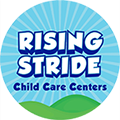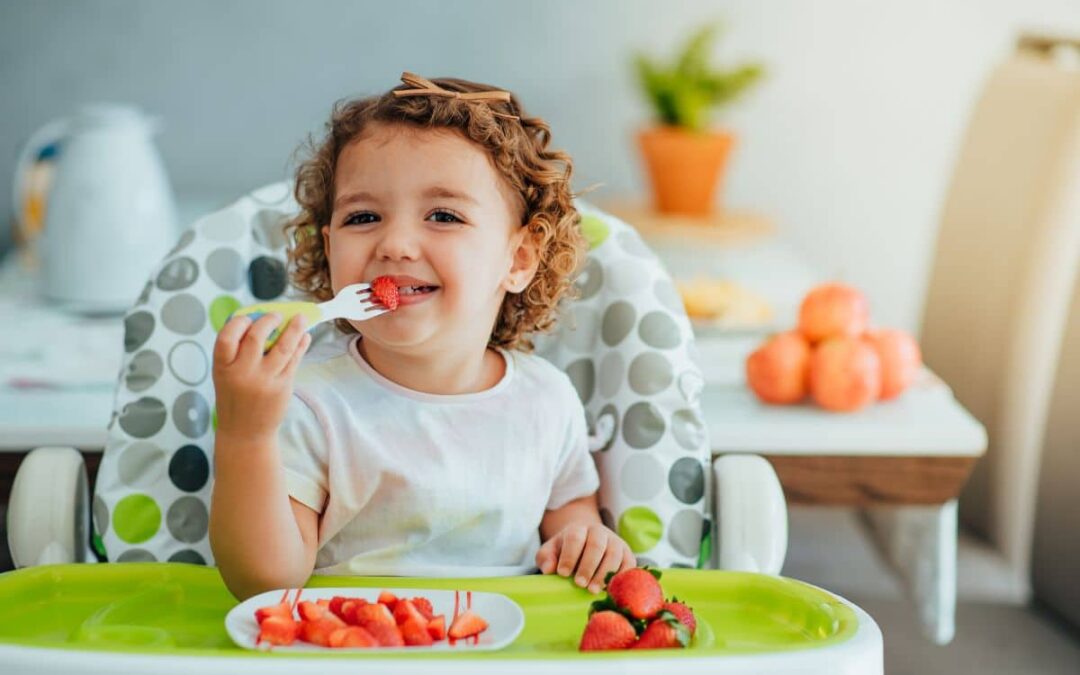HOW WE ARE HANDLING OUR TODDLERS’ PICKY EATING:
- We make sure to put something on their plate we know they will eat. This might mean a favorite fruit or vegetable, or complex carbohydrate (potatoes, whole grains).
- Only give a small portion of a brand new food, or food your little one isn’t always fond of. By offering a small amount (to start), it is less overwhelming to your toddler and wont be as big of a mess to clean up if it ends up on the floor… You can always offer more if they like it.
- Serve a dip with food they may not eat. For the times my toddlers are being picky, I offer a healthy dip to to accommodate their food. Healthy dips might include hummus, guacamole, homemade salad dressing or a healthy store bough dressing. (Primal Kitchen makes great dressing options).
- Offer choices– sometimes I ask my boys their opinion on what they would like to eat. I’ll offer them two choices. I might show them steamed broccoli or raw cucumbers and ask them to point to the food they want with their meal. I normally just do this for sides to their meals.
- Serve fruit at breakfast and snacks only. I have found that if I offer fruit and vegetables together at the same meal, my boys gravitate to eating the fruit, leaving the veggies on their plate. By only giving them vegetables as sides for lunch and dinner, this limits their choices and they usually tend to eat their vegetables.
- Save the leftovers for another time- If my toddlers don’t eat something on their plate, I always save it and offer it again later that day (or save it for the next day). This limits food waste, and many times, they will end up eating the food at another meal.
Check out these meal-prep shortcuts, storage tips, and pack-worthy foods to save you time and help prevent that morning lunch-packing frenzy.
Tip #1: Cut up fruits and vegetables that will last
Choose fruits and vegetables that are long-lasting. Prep produce that can hold up long-term, like bananas with peel, cantaloupe, carrots, grapefruit, cucumbers, grapes, celery, and blueberries. Cut-up pears, apples, and avocados brown quickly, but you can slow the process by squeezing with lemon or lime. You can always save these foods for snack time.
As soon as you bring your produce home from the store and throw your shopping bags on the countertop, go ahead and prepare to rinse them with water. Get out your sealable, clear storage containers or mason jars to keep your cut-up fruits and vegetables good for as long as possible.
Storage Tip: While cut-up fruit can last a while, it’s safest to store them for 4 days
Tip #2: Prep grains in bulk
Add some balance to your child’s lunch with healthy grains to give them the fiber, B vitamins, and complex carbs they need to power through their school day. You can speed up the lunch packing time by cooking grains such as rice, pasta, quinoa, couscous, or farro ahead of time in a big batch. Whether you use a rice cooker, oven, or pot, you can make enough to last safely for a few days (freeze any extra).
Create versatile meals with these cooked grains and use them in soups, stir-fries, taco bowls, or pesto pasta.
Storage Tip: Some cooked grains can typically last between 3–6 days in the fridge, so you can have them prepped as you need them for the week. Portion out what you’ll need, and freeze any extra.
Tip #3: Make protein-packed entrees ahead of time
Make mornings easy peasy by prepping your child’s protein foods early. You may want to keep some protein-packed foods fresh in the fridge and ready to go for school, like egg and veggie bites or tofu “chicken” salad sandwiches. Your kiddo may not be interested in eating these over and over, so consider shaking things up by adding new sides or repurposing foods into wraps or over salads.
Storage Tip: On average, you can keep foods such as these in the fridge for 3 days.
Tip #4: Befriend your freezer
Remember, your freezer is your friend! Take advantage of your freezer by stocking it with packable lunch items. Whether homemade pancakes, cheesy spinach quesadillas, or mango and carrot veggie burgers, you can freeze and pull out these foods 1–2 days before you need them to thaw in the fridge. Once you have built a cold stash, you’ll have a variety of foods to choose from. As you cook, continue making extras to keep them frozen for months!
- Egg and veggie bites
- Black bean and cheese wraps
- Pesto, mozzarella, and tomato pinwheels
- Mini mushroom and kale pizza cups
- Black bean quinoa veggie burgers (for sliders!)
- Mini falafel balls
Storage Tip: Safely store these foods for up to 4 months.
Tip #5: Prep or buy ready-to-eat snacks
Snack prep in your weekly routine makes packing school lunches a breeze. It doesn’t take much time to cook or bake snacks, so they’re a quick grab-and-go option. In addition, you can free up some time in your schedule by incorporating convenient ready-to-eat snacks, which offer plenty of nutrition essentials for your child.
Here are some more tips you can follow when you need to prepare meals for toddlers.
Focus on Providing the Nutrients They Need
Knowing what to feed a toddler is the first step.
Start by researching macronutrients, which include fats, proteins, and carbohydrates. They need a certain amount of these nutrients each day for their bodies to develop and to have sharp brain function.
Packing meals with quality nutrients is particularly important if you work and send your child to preschool or child care each day. Their foods should be rich in B Vitamins, Calcium, Zinc, and other essential nutrients.
Make sure that you’re counting the caloric content of their foods so that you don’t run the risk of overfeeding them. When you understand how each of these nutrients helps your child develop, you can go out of your way to include them.
Source Quality Ingredients for Their Meals
Make sure that you also shop for foods that are clean and don’t have harmful ingredients.
When you feed your child organic food, it’s free of pesticides and additives that can compromise the nutritional value. Cut out foods that have preservatives, high fructose corn syrup, and excessive sodium.
Learn to read the label and have a discerning eye for any foods that you buy.
Instill Positive Food Habits
It’s also important that you help your child to have positive associations with food. Cooking with kids is a great way to instill the best health habits.
Teach them about portion control and encourage them to recognize their body’s hunger and thirst signals. Learn some recipes and figure out how to cook with kids in a way that helps them feel engaged and involved.
When they know where their food comes from, they’ll feel excited about mealtime. Cut out snacking whenever possible, and always differentiate between treats and actual food.
Plan Out Meals for Toddlers That Keep Them Healthy
These points will help you out when you need to know how to prepare the best meals for toddlers. If you have a child that goes to child care or preschool, meal prepping is the best way to keep them well-fed as they learn and interact with other kids.
Grow With Us at Rising Stride Child Care Centers. We provide nursery and Pre-K care close to home. We’d be happy to show you why we’re among the best at what we do.


Can you be more specific about the content of your article? After reading it, I still have some doubts. Hope you can help me.